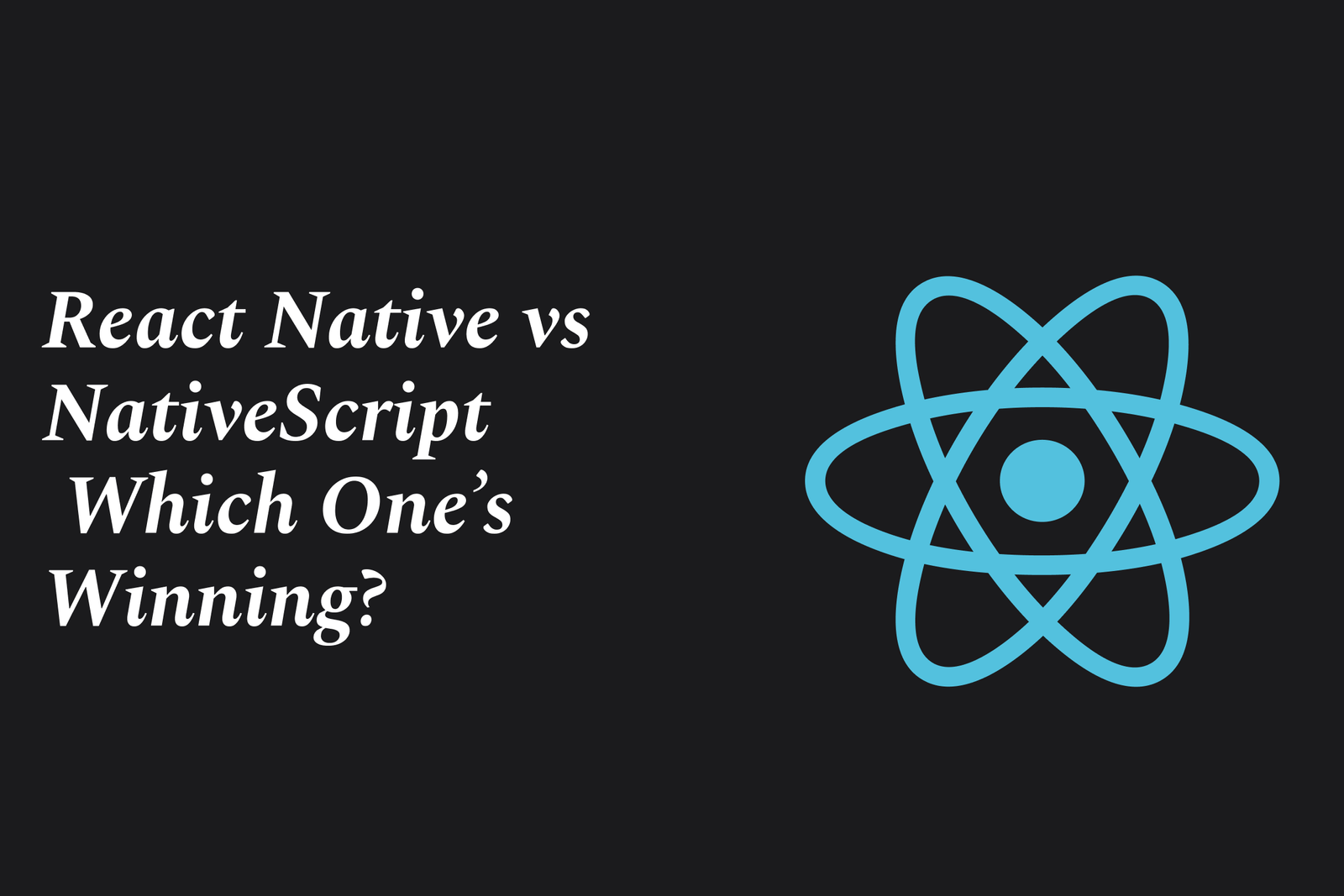React Native Vs NativeScript: Which One?S Winning?
React Native and NativeScript are top cross-platform frameworks for building native mobile apps using JavaScript. React Native, backed by Facebook, offers strong community and React integration, while NativeScript supports Angular/Vue and provides direct native API access. Choice depends on needs.
React Native vs NativeScript: Which One's Winning?
1 ) Introduction to Cross Platform Development
Cross platform mobile app development aims to reduce costs and development time by allowing one codebase to work across iOS and Android. Historically, this came with trade offs in performance or user experience, but modern frameworks like React Native and NativeScript have significantly minimized those issues, enabling near native performance with a unified codebase.
2 ) What is React Native?
Developed by Facebook (Meta), React Native lets developers write business logic in JavaScript, which runs on the native JS engine.
UI elements and styles are compiled to native iOS/Android components, avoiding browser based performance hits.
It champions the motto “Learn once, write anywhere,” offering native look and feel across platforms with ability for platform specific customizations.
React Native is battle tested, used by companies like Instagram, Skype, Airbnb, and Uber.
For web counterparts, solutions such as React Native for Web and ReactXP extend its ecosystem.
3 ) What is NativeScript?
Open source framework enabling native app development using JavaScript, TypeScript, Angular, or Vue.js.
Emphasizes “Write it once, run it anywhere,” managing UI uniformly across platforms.
Uses actual native UI components without web views, ensuring true native performance.
NativeScript Vue integration is mature, allowing Vue.js developers to leverage their skills.
Accesses native device APIs directly without the need for plugins in many cases.
Supports a rich plugin ecosystem and active community contributions.
4 ) Performance and User Experience
Both frameworks compile down to native components, ensuring smooth UX and high performance.
React Native may require bridging for some native modules, while NativeScript provides more transparent direct native API access.
Both provide native UI elements but differ in how they handle rendering and platform abstractions, influencing performance nuances.
5 ) Code Sharing and Development Efficiency
React Native excels when teams are already familiar with React, making the learning curve gentler for React developers.
NativeScript is versatile with multiple framework choices (Angular, Vue, or pure JS/TS), appealing to developers outside React ecosystem.
Both enable single codebase maintenance, but React Native additionally supports some ecosystem tools for web integration.
6 ) Community, Ecosystem, and Support
React Native has a larger community, broader adoption, and more mature ecosystem with abundant third party libraries and plugins.
NativeScript has a smaller but dedicated and growing community, with strong backing especially from enterprises favoring Angular or Vue.
7 ) When to Choose Which?
Choose React Native if:
Your team has React expertise.
You prioritize a widely adopted, thoroughly tested solution.
You want better web integration capabilities.
Choose NativeScript if:
You prefer Vue.js or Angular, or want flexibility in framework choice.
You need direct native API access without extensive bridging.
Your app use case benefits from a uniform UI experience across platforms with a desire to avoid React's JSX.
Summary
Both React Native and NativeScript provide excellent options for cross platform mobile app development in 2024, delivering native like performance and UI with a single codebase. React Native leads in popularity, community size, and web integration, making it ideal for React focused teams. NativeScript offers flexibility with framework choices and more direct native API access, appealing to developers seeking a more transparent native experience. The final choice depends on your team's skillset, project requirements, and preferred development workflow.
https://justacademy.in/news-detail/flutter-on-raspberry-pi:-new-examples
https://justacademy.in/news-detail/android-power-management-enhancements
https://justacademy.in/news-detail/react-native-and-expo:-the-dynamic-duo-of-mobile-development
https://justacademy.in/news-detail/building-pwas-with-flutter-in-2025
https://justacademy.in/news-detail/flutter-beta-features-worth-exploring
Related Posts
In 2025, top Angular libraries offer modern, feature-rich components and tools for building dynamic web apps. From powerful data grids to low-code platforms like UI Bakery, these libraries enhance development speed, UI design, and scalability, making them essential for Angular developers.
Migrating from AngularJS to Angular 17 involves gradually upgrading your app by running both frameworks together using tools like ngUpgrade, rewriting components in TypeScript, and adopting Angular’s modern architecture to enhance performance, maintainability, and long-term support.
Angular state management tools help organize and handle app data efficiently, improving scalability and maintainability. Popular options include NgRx for robust, RxJS-based patterns, and newer Signal Store solutions that offer simpler, reactive approaches integrated tightly with Angular’s latest features.
RxJS in Angular empowers developers to manage asynchronous data streams with powerful operators like `forkJoin`, `combineLatest`, and `zip`. Mastering these key operators in 2025 is essential for building efficient, reactive applications that handle complex event sequences seamlessly.
Angular performance optimization in 2025 focuses on improving app speed and responsiveness by using techniques like OnPush change detection, lazy loading, efficient data caching, and AOT compilation. These practices reduce load times, enhance user experience, and ensure scalable, fast Angular applications.
In 2025, Angular remains preferred for large-scale, enterprise apps with its robust, all-in-one framework, while Vue attracts developers seeking simplicity and fast development for smaller projects. Both frameworks excel, with choice driven by project needs and team expertise.
Angular Signals are a new reactive primitive in Angular 16 that enable fine-grained, efficient change detection by automatically tracking dependencies and updating only affected parts of the UI. They simplify state management and boost app performance, revolutionizing Angular's reactivity model.
Angular interview questions to prepare in 2025 focus on core concepts like components, directives, data binding, routing, and dependency injection, along with TypeScript mastery and latest Angular features to ensure strong practical knowledge for building scalable, efficient web applications.
AngularJS reached its official end of support in January 2022, meaning no further updates or security patches. To ensure app security and performance, developers should consider migrating to modern Angular versions or seek third-party long-term support options if immediate migration isn’t possible.
The Angular Roadmap 2025 highlights upcoming features focused on improving developer experience and performance, including zoneless Angular, Signals integration, enhanced Forms, async data handling, improved HMR, and expanded Angular Material/CDK enhancements, driving modern, efficient web app development.










